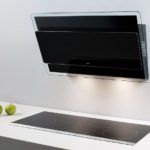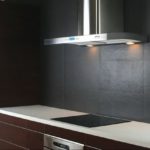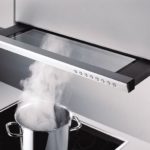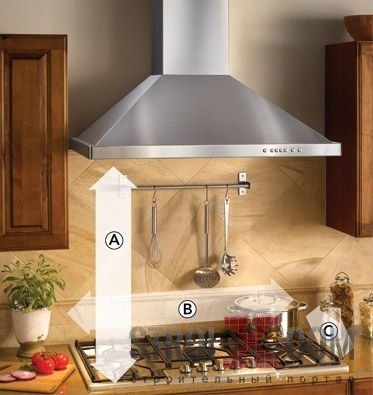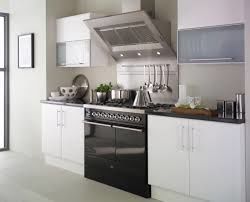Which hood is better: inclined or domed?
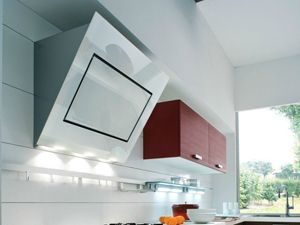 Cozy atmosphere, delicious smells from cooking food, familiar atmosphere of the kitchen to everyone. But there is also a downside. It happens that something will burn, boil away, there is a constant presence of high humidity and an unpleasant smell of gas. And the feeling of comfort gradually smoothes out. Irritating odors, traces of fumes and gradually appearing traces of grease on the walls and ceiling remain. What to do in this case. You can open the windows for ventilation. You can install a fan in the ventilation duct.
Cozy atmosphere, delicious smells from cooking food, familiar atmosphere of the kitchen to everyone. But there is also a downside. It happens that something will burn, boil away, there is a constant presence of high humidity and an unpleasant smell of gas. And the feeling of comfort gradually smoothes out. Irritating odors, traces of fumes and gradually appearing traces of grease on the walls and ceiling remain. What to do in this case. You can open the windows for ventilation. You can install a fan in the ventilation duct.
But in winter you cannot open the windows, and a fan, even the most powerful one, is unable to completely eliminate such problems. It is designed to create circulation and remove contaminated air, but the volume of the kitchen space when preparing food is constantly updated with new odors and to completely eliminate them the fan must operate in constant mode.
Developers and manufacturers of household appliances took these points into account and consumers were offered various design options for hoods. Installed directly above the locations of stoves (gas, electric, induction), hoods ensure complete removal of contaminated air masses.
These devices are not an alternative to traditional ventilation systems. Used in combination, they allow you to achieve positive results when removing or purifying air in the kitchen. But inclined or dome hood: which is better for a specific apartment or non-residential premises?
The content of the article
Features of design choice
The range of proposed designs is constantly expanding. The consumer does not have a question about where to buy; more often the question arises about what to choose. First you need to decide: is the hood inclined or domed? Do you need an autonomous hood with air purification (circulation), which does not require connection to ventilation shafts and systems, or a flow one? The first is more compact, which is important for small spaces.
Important. This option does not eliminate gas odors and is only suitable when using electric or induction hobs.
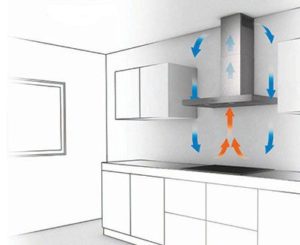 An option that is suitable for all stoves, a flow-through exhaust system. But even here you have to choose between suspended structures and built-in ones.
An option that is suitable for all stoves, a flow-through exhaust system. But even here you have to choose between suspended structures and built-in ones.
Characteristics of dome hoods
Dome hoods are a type of suspended ventilation systems. This can also be a design with circulation air purification, but most often “fireplace” type models are used.
These models consist of a dome structure of various shapes (hemisphere, square, rectangular) and an air duct system made of corrugated metal pipes connected to a common ventilation system. They can be equipped with additional replaceable filters and ventilation equipment that provides forced suction of air and its supply into the air duct.
Dome hoods are considered the most effective in the process of collecting and removing polluted air masses.
Characteristics of inclined hoods
Inclined hoods belong to the class of built-in kitchen equipment.The compact dimensions of the air intake device itself, the connecting elements (pipes, “elbows”) are smaller in size compared to air ducts of dome structures. Possibility of installing the hood “screen” at any angle.
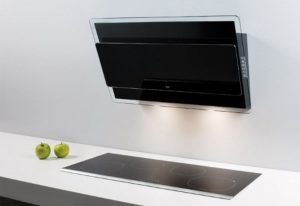 The design is made taking into account the laws of aerodynamics. Tapered passage openings help increase airflow speed, allowing you to achieve high performance without installing more energy-intensive ventilation equipment.
The design is made taking into account the laws of aerodynamics. Tapered passage openings help increase airflow speed, allowing you to achieve high performance without installing more energy-intensive ventilation equipment.
Comparison
Which hoods are better: inclined or domed, after all?
Comparing dome and inclined types of hood designs is a little incorrect. In each individual case, the technical characteristics of models may have both positive qualities and disadvantages.
Advantages of each type
Dome (hanging) hoods are optimal for large kitchens. In this case, they can be used not only as a household appliance, but also as a separate interior detail, which is often used in design developments. Another advantage is the ability to install them anywhere, depending on the location of the hob. But this advantage can also become a disadvantage. Direct-flow dome structures will require the installation of air ducts and additional electrical wiring, which is not always appropriate when decorating the interior of a kitchen space.
Inclined (built-in) ventilation devices take up little space. This is considered the main indicator in favor of these models. However, installing inclined systems requires a wall and there are not many placement options. If the stove is located against the wall, there are no problems.And if the main working area is located separately, at a distance from the walls, then it is almost impossible to install an inclined structure.
If we compare the performance of modern exhaust systems offered by manufacturers, then everything depends on the power and design of the installed equipment (motor, fan, shape and size of the “plafond”, “screen”). To increase performance, some dome models can be equipped with several fans with separate motors, but this greatly affects the noise level of the device. Installing additional equipment in inclined structures increases the dimensions and eliminates the main advantage, the compactness of the device.
Which hood is better: inclined or domed?
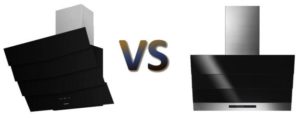 Manufacturers took a different route. They left the choice to the consumer, offering modern models of air purification systems, characterized by ease of installation and advanced control systems. The variety of materials used for manufacturing, colors, variety of shapes and sizes, wide price range allows the buyer to make a choice based solely on their own preferences.
Manufacturers took a different route. They left the choice to the consumer, offering modern models of air purification systems, characterized by ease of installation and advanced control systems. The variety of materials used for manufacturing, colors, variety of shapes and sizes, wide price range allows the buyer to make a choice based solely on their own preferences.

